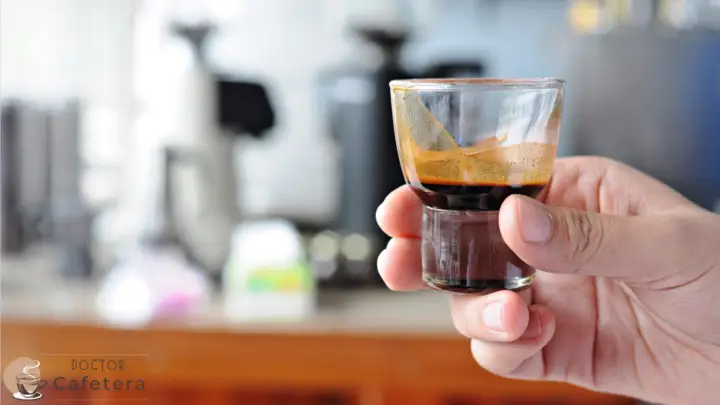Coffee is more than just a beverage; it’s a way of life for many people. And if you’re a coffee enthusiast, you know there are countless ways to enjoy this aromatic and flavorful drink. Among the various types of coffee, espresso, ristretto, and lungo are three Italian variations that have gained worldwide popularity.
At first glance, these three types of coffee might seem similar, but each has a distinct flavor, strength, and brewing process. For example, espresso is a small but strong shot of coffee that packs a punch, while ristretto is even smaller and more concentrated. Lungo, on the other hand, is a longer and milder version of espresso.
This article will explore the differences between espresso, ristretto, and lungo and help you understand which suits your taste and needs. Whether you’re looking for a quick energy boost or a leisurely coffee break, we’ve got you covered. So grab a cup of your favorite coffee and dive in!
Difference between lungo, espresso, and ristretto
Espresso
- Extraction time: typically 20-30 seconds
- Final size: Between 1-2 ounces
- Flavor: Bold and complex, with a rich crema on top
- Caffeine content: High, with an average of 63mg per shot of espresso
Let’s start with the most famous of the three: espresso. This small but mighty shot of coffee is made by forcing hot water through finely-ground coffee beans at high pressure, resulting in a concentrated, full-bodied brew with a rich crema on top.
Espresso is extracted quickly, usually in 20-30 seconds, resulting in a small shot of coffee, typically between 1 and 2 ounces. The high pressure used during extraction creates a thick layer of crema on top of the espresso, contributing to its rich and complex flavor profile.
Espresso is beloved for its bold, complex flavor and its ability to provide a quick energy boost on the go. Due to its high caffeine content and small size, espresso is often used as a base for coffee drinks such as lattes and cappuccinos.
Lungo
- Extraction time: Typically 30-60 seconds
- Final Size: Usually between 3-4 ounces
- Flavor: Milder and sweeter than espresso due to longer extraction time, still full of flavor
- Caffeine content: Medium (lower than espresso due to larger water volume, but still provides a good energy boost)
Next is lungo, made by running more water through the coffee grounds than espresso. This longer extraction process results in a milder, more diluted coffee that is still full of flavor. Lungo coffee has a slightly sweeter taste than espresso, thanks to the extended extraction time, and is often enjoyed as a leisurely morning or afternoon coffee.
Lungo extraction typically takes between 30 and 60 seconds, resulting in a larger coffee beverage than espresso, usually between 3 and 4 ounces. The longer extraction time allows more flavor compounds to be extracted from the beans, resulting in a sweeter and less bitter taste.
While Lungo has a slightly lower caffeine content than espresso due to the larger water volume, it still provides a good energy boost.
Ristretto
- Extraction time: Shorter than espresso (typically 10-20 seconds)
- Final size: Smaller than espresso (usually less than 1 ounce)
- Flavor: Intense and complex, with a velvety texture and a more balanced taste
- Caffeine content: Lower than espresso due to the shorter extraction time and a smaller amount of water, resulting in less caffeine being extracted from the beans.
Last is ristretto, similar to espresso but with a shorter extraction time and less water. This results in a smaller, more concentrated shot of coffee with a velvety texture and intense, complex flavor. Despite its smaller size, ristretto has less caffeine than espresso since the shorter extraction time means less caffeine is extracted from the beans.
Ristretto extraction typically takes only 10-20 seconds, resulting in a shot of coffee that is usually less than 1 ounce. Due to the shorter extraction time, ristretto has a more intense and complex flavor than espresso, with a richer mouthfeel and a more balanced taste.
While ristretto has a lower caffeine content than espresso due to the smaller amount of water used, its concentrated flavor and velvety texture make it a popular choice among coffee aficionados.
Conclusion
Espresso is a strong and bold shot that provides a quick energy boost, while ristretto is more concentrated and intense, with a velvety texture and complex flavor. Conversely, Lungo is milder and sweeter than espresso and is often enjoyed as a leisurely morning or afternoon coffee.
These three espresso variations are made from the same basic ingredients but differ in extraction time, final size, and caffeine content. Ultimately, the choice between espresso, ristretto, and lungo comes from personal taste and preference.
So whether you’re in the mood for a quick pick-me-up or a leisurely coffee break, an espresso variation will satisfy your caffeine cravings and taste buds.


